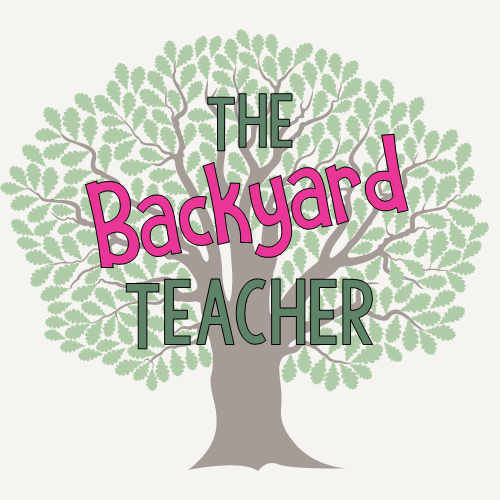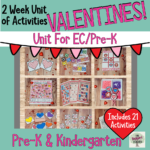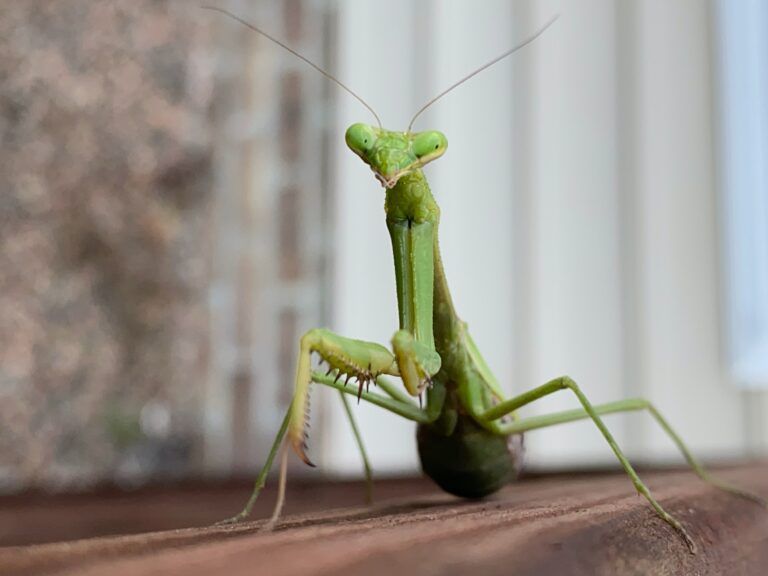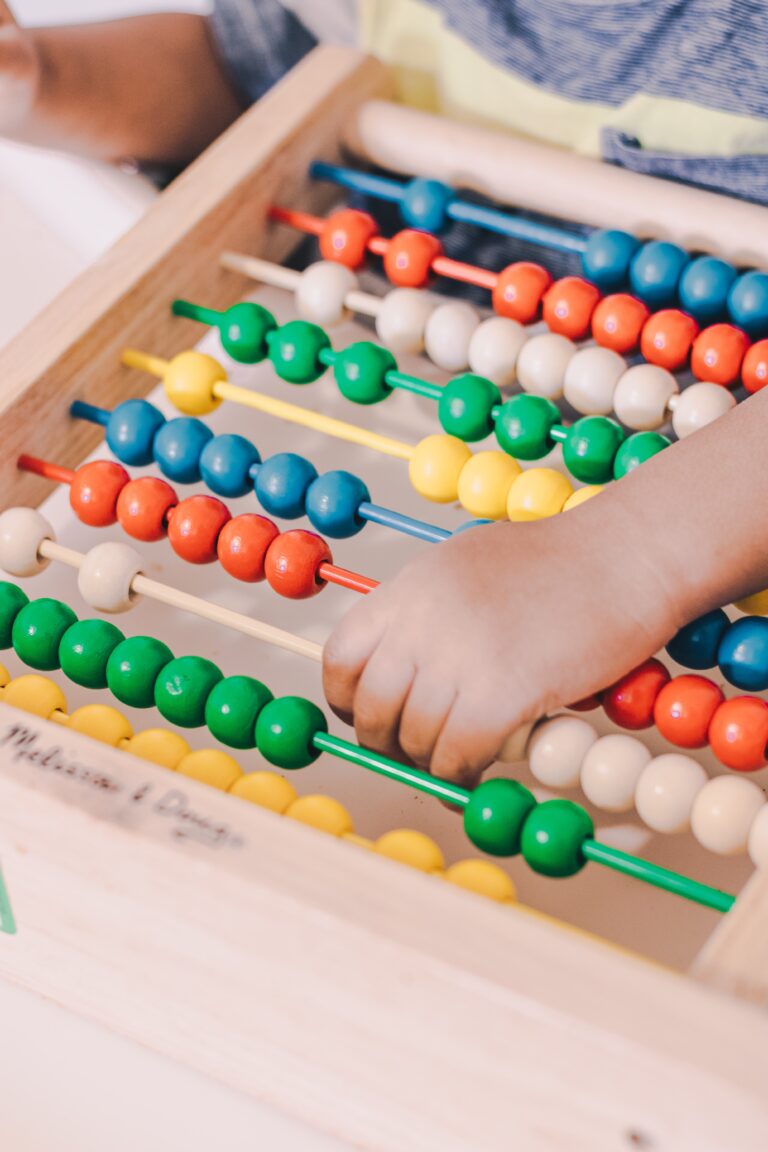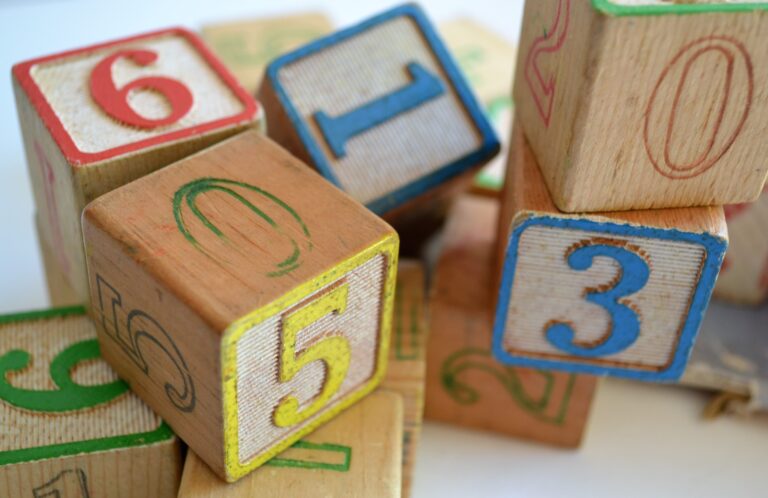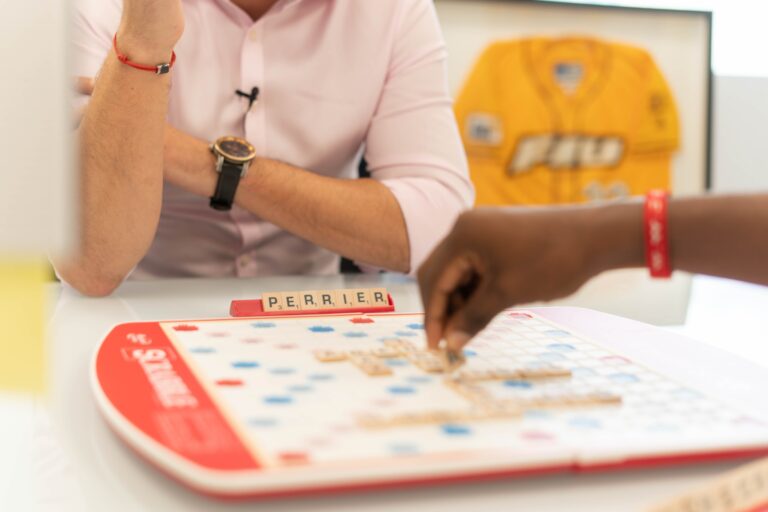Why do we teach themes like Valentines Day in Early Childhood?

Valentines Day is just an excuse for card shops and florists to make money…right?
Hmm…maybe not. Whether you’re a fan of Valentines Day or not, you’ll start seeing it everywhere around mid-January, and it’s a common Early Childhood theme, even though kids are a little bit young for romantic love!
(If you would like to listen to this post as a podcast, scroll to the bottom and hit play!)
Why do we teach kids about Valentines Day?
So why do we do it?
In my opinion, there’s a few reasons. The first is that it’s a nice social skills topic. Showing affection and kindness to our friends is something we always try and reinforce in Early Childhood settings. Kids need to learn acceptable ways to show their affection and love with their peers. At home, they might do that by wrestling with a parent or an older sibling, for example, but that kind of rough play is generally frowned upon in a care environment.
Valentines Day is a nice opportunity to teach what is and isn’t acceptable when it comes to expressing our feelings. I have a little friend in my group who likes to pinch Educators on the bottom and say, “Hey, stinky butt! Now, while it’s kinda funny, and I love their exuberant personality, there’s a lesson on appropriate touching coming up for that little person!
Valentines day is a cultural celebration
The next reason we use a Valentines Day theme is because it’s a part of most kids’ world. They see the same advertising we do, they may have adults at home who talk about it and maybe their grown ups go out for dinner or date night on that date.
It benefits kids to see their loved ones expressing affection to each other. It teaches them that everyone can give and receive love and affection. Teaching kids that Valentines Day is a special day to show some extra love to those close to you gives them a context to understand more about familial interaction.

Valentines day is a vehicle for learning other skills
The reason I prefer is that using a Valentines Day theme in Early Childhood is the same as any other theme – it’s a vehicle for teaching desirable behaviours, skills and concepts. It’s not so much WHAT the activity is, but the skills and learning BEHIND the activities.
For example, making some kind of heart craft requires a list of skills –
- fine motor skills to manipulate the materials
- some executive function skills for planning where you’ll glue the decorations
- social skills to work at a table with others and share the materials
- some colour awareness for talking about which pieces you want to glue on
- receptive language skills for listening to the instructions
- and some more executive function for being able to follow them!
You can see in this example that it’s not the theme that matters, but the skills the kids are learning via working with the theme.
Plus, Valentines activities can be fun!! I think we sometimes get so caught up in thinking about pedagogy and rigor that we can forget it’s important to enjoy things.
Valentines activities are generally bright, pretty, and engaging. They can build motivation, engagement and an intrinsic drive for participation and learning.
So, it doesn’t matter whether the theme is Valentines Day or Wear Your PJs to School day or My favourite socks day – the theme is just the vehicle. It’s your way to get your kids where you need them to go. And it helps make the journey a little more fun!

So, what IS Valentines Day?
Valentine’s Day is a special occasion that is celebrated all over the world. It’s a day when people express their love and affection for one another through various forms of communication, such as sending cards, flowers, and gifts. One of the most traditional ways to express love on Valentine’s Day is by sending a special card. These cards were once handmade creations that were individually designed to show how much the sender loved the recipient. The cards would often contain sentimental verse, proclaiming the beauty of the receiver and how much they were loved.
How does this help?
As parents and educators, it is important that we teach children about Valentine’s Day and the meaning behind it. By teaching children about the history and traditions of Valentine’s Day, we are helping them to understand the importance of expressing love and affection for others.
It also allows them to appreciate the value of taking the time to create something special for someone they care about. Furthermore, it encourages them to express their feelings to others and to develop their creativity.
Valentine’s Day isn’t just about buying store-bought cards and chocolates, it’s about expressing love and affection in a meaningful way.
By teaching children about the history and traditions of Valentine’s Day, we are helping them to understand the importance of expressing love and affection for others, and encouraging them to develop their creativity.

Who are the people that matter to us on Valentines Day?
This topic invites kids to talk about the people that matter to them – their families, their friends, their educators…whoever they feel an attachment with. Little kids are more likely to talk about their mothers and fathers, and maybe siblings.
Older kids may include their friends, or someone in their extended family. I had a chat with a pre-schooler from my centre who told me all about his nan, how she was so nice and had given a toy mobile phone to the centre for all the kids to play with. Then I discovered that it wasn’t actually his nan, but his best friend’s! It seems she had made an impact on him so he had unofficially adopted her!
The point is, it doesn’t matter who we include in our close circle, but how they make us feel and how we express those feelings.
How do we show affection to our friends and family?
I’m willing to bet you’ve received a hug from a small friend that has almost snapped you in half! My own daughter built a reputation for almost cracking backs when she was little! It was important to help her learn that while it’s lovely to show affection to those we love, it’s nicer if it doesn’t hurt!
We need to teach kids they can show affection by playing nicely together, by being kind to each other and by helping our friends. Holding hands is nice – dragging our friends forcibly by the hand is less so.
Young children are ego-centric
Young kids don’t yet have the skills to see things from the point of view of others. In order to help them understand, we need to make the experience more relevant and personal for them.
For example: ask –
How do you feel when someone smiles at you and gives you a gentle hug? (You can demonstrate what you mean by gently hugging them).
How does it feel when someone squeezes you too tightly? (I’m not suggesting you squeeze them too hard to model, but give them a firm hug, maybe with a tickle for emphasis!)
Model other ways to show affection – it might help to think about the ways you show affection to the kids. Hopefully you smile at them, you might call them a pet name like buddy, or darling, or something. You might take their hand, pat them on the back, tousle their hair…demonstrate these things and ask how they make them feel.
Some kids aren’t used to affection
Kids who are used to receiving affection probably won’t even think twice. To them, it’s a normalpart of life. But kids who aren’t used to receiving affection will be very aware of every touch. I’ve worked with disadvantaged kids over the years, and my advice is to express your affection slowly and be alert to how they respond. Let that guide you.
I once taught a lovely (but pretty challenging) 8-year-old boy who came had a very tough, disadvantaged home life. My class was talking about hugs being a sign of affection and he said no one ever hugged him. Later, I asked him if he wanted a hug and he said yes. From then on, I made a point of seeking him out every day for a hug. Then, I noticed that I didn’t have to seek him out anymore – he was seeking me out for that hug. His challenging behaviours decreased a little and we developed a real bond. I like to think that those daily hugs made a difference, in some small way.
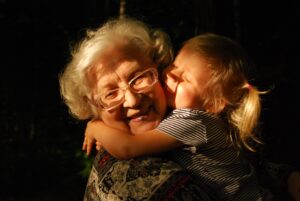
Why do we show affection to others?
Humans are biologically inclined to give and receive affection. Physical touch from someone you care about releases hormones that increase feelings of security, reduce pain, lower your blood pressure and just plain feel good.
Think of a toddler taking a tumble – our first reaction is to pick them up and hold them. And how many times have you kissed a small injury ‘better’? A kiss can’t really fix an ouch, but the gesture itself can be comforting. The kindness and concern you show is what makes it better.
Our role as educators is to teach kids how to respectfully and appropriately show their feelings to others. We need to talk about it, model it and help them show it themselves. We need to teach help them learn the boundaries between what is and isn’t ok. And hopefully we can help kids have a nicer time in care in the meantime!
How do I teach my kids about Valentines Day?
I made a Valentines Unit for Early Childhood to teach to my own group of small humans – my kiddos are 2-3 years old and include a broad range of abilities. I have some very young 2 year olds and some quite mature 3 year olds, so the activities I do have to be easy to differentiate.
You can find the link to the unit below. I also have some free activities you can try out. You know your kids best, so if something seems too hard, or too easy, just tweak it, change it or do it a different day. And have fun!

If you would like to take a look at my Valentines Unit for Early Childhood, you can download a preview by clicking on the image below.
I always share a freebie or two for each unit I make – if you would like this one, just fill in the form below.
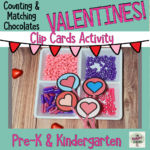
If you would like to listen to this post instead, click play on the player.
I hope you enjoy teaching your kids about Valentines Day!

